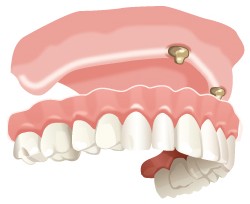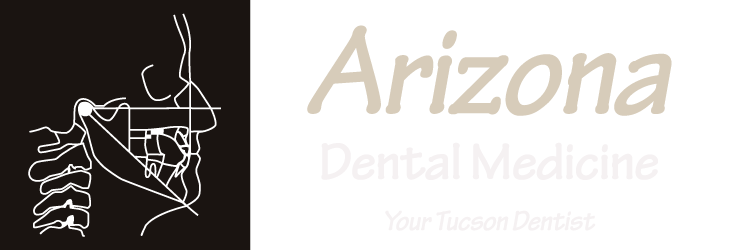Crowns/Bridges
A crown (cap) is a restoration that is placed on teeth that have lost a lot of their structure.There are many different types of crowns, full porcelain, porcelain fused to metal, full metal crowns… Your dentist will explain the advantage and disadvantage of each kind for you.
The process of making a crown includes many steps that start in our office with preparing the teeth and taking impressions from the tooth/teeth involved. Then a temporary crown or bridge is placed on your teeth.The impressions are sent to the lab. In the lab a mold of the teeth is poured and the work begins.
There are multiple steps and different technicians work on the mold to fabricate a crown or bridge. The completed work is sent back to the office and after necessary checks and adjustments it is cemented onto your teeth.
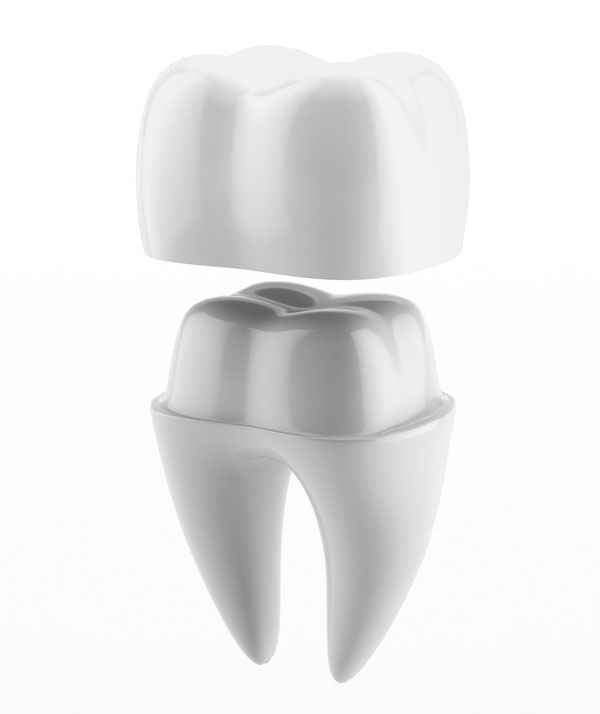
Inlays/Onlays
Inlays and Onlays are lab-made restorations that are placed on teeth when the cavity or lost tooth structure is too large to be restored by a simple filling. The process of making an inlay is very similar to a crown. After the tooth is prepared, it is cemented or bonded to the tooth.
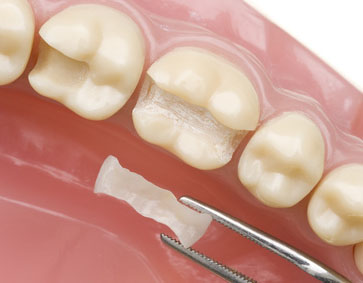
There are different materials that inlays are made of, including gold, porcelain, and composite resins. Porcelain and composite inlays and onlays are cosmetic alternatives to fillings and are very strong compared to regular white fillings. Gold inlays and onlays are also suitable alternatives, but their appearance makes them less popular.
Your dentist will explain when an inlay or onlay is a viable treatment option for you. In general, inlays and onlays can replace most back teeth fillings and are sometimes cosmetically preferred over conventional fillings. At the same time, they are more conservative than crowns.
As far as cost is concerned, because the process of making an inlay or onlay is similar to a crown, its cost is also comparable. But when considering the longevity of inlays and onlays, they can end up costing less than traditional fillings.
Partials/Dentures
Missing teeth can affect the way you speak, chew, and function. In addition, it affects the shape of your face, lips, cheeks and bone structure. Because teeth function together, when one is missing, others try to compensate, which in turn causes further problems. Adjacent teeth may shift into that spot, or teeth from the opposite jaw may supererupt out of the bone causing periodontal problems, bone loss and ultimately loss of additional teeth. When other teeth try to compensate, your bite is altered and stress is placed on the teeth and surrounding tissues in the mouth. This leads to difficulty in cleaning and the increased likelihood of decay.
Teeth can be replaced with fixed bridges, removable partials, complete dentures, and implants.
Fixed Bridge
A fixed bridge is also called a fixed partial denture, which is bonded or cemented to the underlying tooth structure. A bridge is cemented to natural teeth (the abutments) while the missing tooth (the pontic) replaces the missing tooth/teeth.
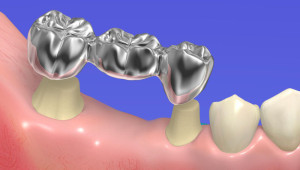
Implant Bridge
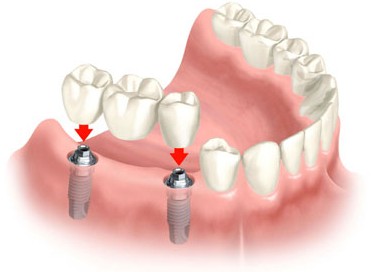
Implant bridges are the same thing as a fixed bridge, but rather than using natural teeth as the abutments, the bridge is attached to implants.
Removable Partial Denture
A partial, or RPD, is a denture for patients that are partially edentulous and still have teeth remaining in the arch. A partial is removable and maintains stability using clasps around the existing teeth, while resting on the edentulous ridge(s).

Full Dentures
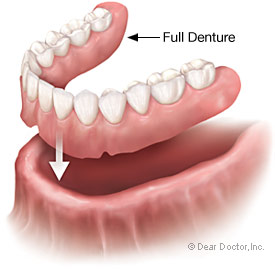
Full dentures are used to replace a full arch of missing teeth. They rely on suction, muscle coordination, and the underlying soft and hard tissues for support. As changes occur to the soft and hard tissues with long term wear, relining of the denture may be necessary.
Implant Supported Denture
Implants can be used to support both partial and complete dentures to aid in stability, retention and overall comfort.
